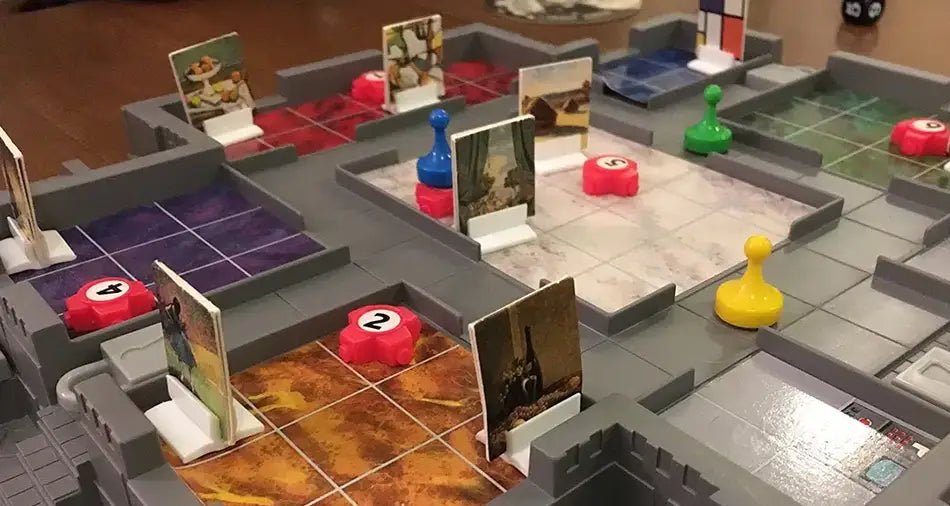“So many games, so little time.”
Heard that before, have you? The sentiment is very much linked to a disease that I am afflicted with. It’s a common malady known by the acronym GAS which translates as “Game Acquisition Syndrome.” It is likewise related to, and often found alongside the dreaded FOMO. (Fortunately, I do not suffer that one.)
Here is the real core of the matter (I think): When I get a game, I enjoy it on several levels. Whether it’s shiny new or faded and worn, in pristine condition or one step away from the trash bin, I certainly don’t look at it like most people do!
- Being a graphic artist, I study the design and consider the decisions made regarding the visual and tangible components of the game. The use of art and typography, how it is organized for clarity and function within the game. What works well and what falls short of success? Also, what’s the visual impact of the product on the store shelves? (In that regard, the advertisements are equally as fascinating!)
- As a craftsman, I look at the manufacturing process and the print techniques used in the game. I’m fascinated by the level of technology employed, such as the format, lithography, screen printing, mechanical assembly, materials and adhesives, ceramics, woodworking, sometimes metalwork, paints, dies, and coatings, and later the prolific use of plastics.
- From the historian’s perspective, I consider what a game tells me about the society in which it was played. This historical analysis includes the players, of course, but also the designers, artists, marketers and sellers of the game. The subject matter and its target audience are major factors. A game reflects a significant amount of information about public and private life, social attitudes and values, sins and virtues. And the rules and challenges of the actual game play are revealing. That entails not only the goals and theme of the game, but also the balance of chance and strategy, the assumed intellectual level of the “target demographic,” and the amount of time and attention required of the players. Also, how the game was treated by its owners is significant, too. All this paints a picture of the society like a time capsule.
- What’s the significance of the game in terms of my collection? Does it complete a set (like the 3M Bookshelf series or Drueke’s travel games) or fill a missing link in a game’s evolution over time (like the many versions of crossword games over the generations). Sometimes a theme fits the collection, such as games about 17th century North American colonialism or Star Trek. Sometimes it’s the style of the game, such as hidden-role games, dice games, or deck-building games. All of these aspects definitely affect the decision to acquire a game.
- Is it fun? This is the last item in the list. In my experience, most games are not fun. Some games in my collection are completely unplayable, in fact. But “fun” is a totally subjective concept, and if I were to segregate my collection into “fun” and “not fun” sets, it would be quite revealing, I think. (This is a subject for another time.)

I shared a video some time ago that was a tour of my game room, showing a bit of my tabletop games collection. It’s reached well over 1700 games now, spanning the decades from the late 1800s until today.
Q: “Have you played all those games?”
A: Nope. If I play one game each day, that’s over 4.5 years to get through the collection. Based on my GAS affliction, in 4.5 years there will be at least another few month’s worth of games added to the total by then. Of course, that also assumes that I could find someone to play a game with me every day for years to come!
And there are the “Shelves of Shame” — home to dozens of games still in the shrink wrap. I just had to have ‘em. Just had to.
But it’s not a serious problem. I can quit any time. Just stop and walk away.
No really.

